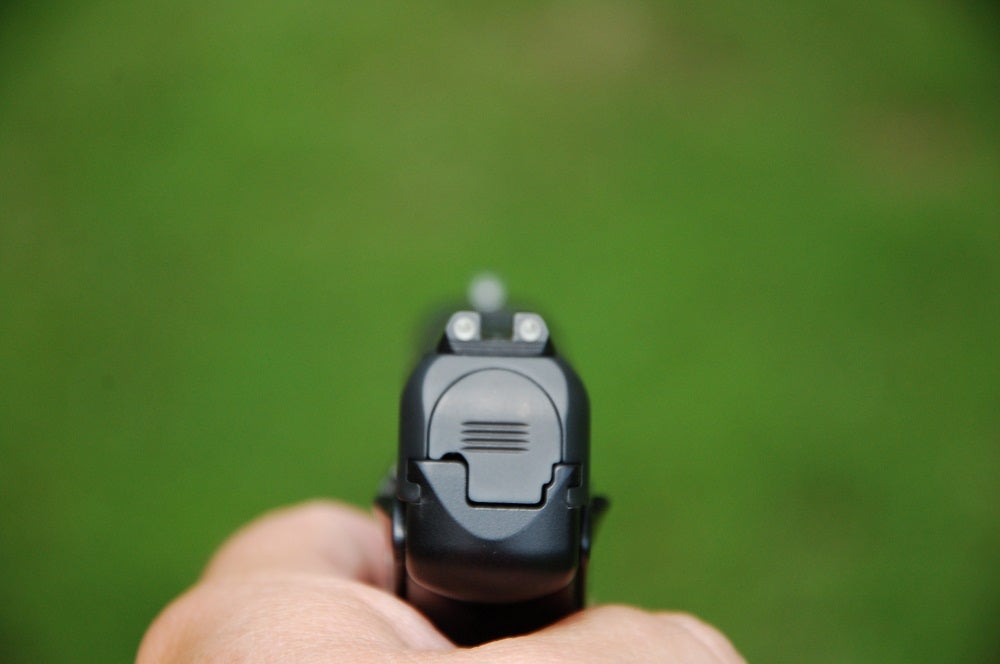Handgun Front Sight Acquisition
Dr. John Woods 12.01.16

In the olden days, a black powder revolver front sight could have been a short black post or a tiny brass ball atop the barrel muzzle. When the Colt SAA came along, the front sight was a rather large flat-sided slab blade. Later came ramp sights on double action guns, then came all sorts of varieties, including black square posts, red inserts, black ribbed ramps, and now dayglow inserts bearing green or red front sight insert tubes.
All of these front sight variations work with different degrees of sight acquisition success depending mostly on the ambient daylight available, the quality of the shooter’s eyes, and shooting conditions such as dim light, artificial light, or total black out situations.
Many revolvers and pistols came with and still do have simple black front sights to be viewed set into a black rear sight, either fixed or adjustable. In some cases a smaller black front square shape was “set” into the square notch of the rear sight. With some light around the sides of this sight holding pattern, the gun would generally shoot to that point of aim. Practice confirmed this.
Likewise then came the red/orange insert embedded into the front ramp of an N-Frame Smith and Wesson, say a Model 29. That red portion was lined up inside the rear sight. The Ruger Redhawk and Super Redhawk improved this somewhat by making the front sight changeable to different colors: red, orange, yellow, or total black. Shooting experimentation often proved the only way to find out which best served the shooter’s eyesight.
Pistols like the original 1911s had a very small half-moon front sight and a low rear sight with just a small notch cut in the center. Pitiful for sure. Today’s modern guns (like a Glock) have non-metallic sights, all black. State-of-the-art 1911 pistols and others have very precise adjustable rear sights and a host of different front sights, some with fluorescent inserts or matte black. These generally work very well.
With shooting any kind, type, brand, or pistol sight configuration, training and sustained regular practice leads to embedding the best handling and shooting accuracy. Even “dry firing” without pulling the trigger is helpful. This means to simply throw up the handgun, and align the sights. Do this often in a variety of lighting situations.